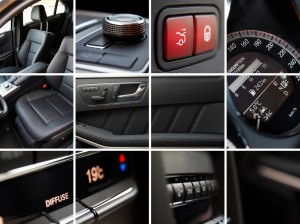The Future of Driving – It’s Already Here
, Posted in: Inspiration, Author: nleavitt (January 21, 2012)
 That now hoary ad campaign, “This is not your father’s Oldsmobile…This is the new generation of Olds,” captured our imagination many moons ago. It has now become a popular culture catch phrase that has spawned endless variations used for countless products and services.
That now hoary ad campaign, “This is not your father’s Oldsmobile…This is the new generation of Olds,” captured our imagination many moons ago. It has now become a popular culture catch phrase that has spawned endless variations used for countless products and services.
But catch phrases don’t sell cars. The Oldsmobile didn’t evolve with the times and was phased out in 2004.
Oldsmobile executives probably didn’t bother to attend CES. If they did, they would have picked up valuable market intel on where the automotive industry’s heading.
At last week’s CES, there was a lot of buzz about how cars are connecting with the cloud, and talk about exciting new apps either on the market or destined for your vehicle in the near future.
One part of your car that is already being dramatically transformed is the dashboard.
Tony King-Smith serves as vice president-marketing for UK-based Imagination Technologies, a leading multimedia and communications technologies company. As reported in EE Catalog, King-Smith said manufacturers have now recognized that a global chassis approach in car manufacturing will result in cost reductions if adopted in high volume.
“Being able to configure more customer options at the dealer rather than custom fit on a production line has major benefits to the retail channel,” he said. “That’s good news for everyone in the car supply chain.”
King-Smith said we’ll see more and more car models utilizing software-configurable dashboards using flat panels.
By combining a high-performance graphics processor with video, King-Smith said engineers are now developing apps like augmented reality for head-up displays and navigation point-of-interest recognition.
Imagination Technologies, for instance, is working with companies like Navteq in developing next-gen navigation solutions and with leading car manufacturers.
King-Smith added that utilizing low-power graphics processors (GPUs) will increase dashboard usability, as GPUs provide an increase in performance/quality and reduce power consumption/heat build-up.
And the synergies between the automotive and consumer technology markets are poised for explosive growth. The Consumer Electronics Association predicts total shipment revenues of total automotive technology will top $9.3 billion in 2012, up from $9 billion in 2011.
Harry McCracken, editor of Technologizer, said the automobile industry is finally seeing cars as consumer electronic devices.
“Today, young people live for the day when they can have their own smartphone. Car companies now understand this – while safety is paramount, they also want to build things that are cool,” said McCracken.
And there was a lot of cool automotive software bling at CES, all playing up the connectivity angles.
“Connectivity has gone from being a unique feature that makes some brands stand out for having it to being a must-have feature that makes some brands stand out for not having it,” noted IHS Analyst Aaron Bragman.
Ford, for instance, announced five new apps for its Sync hands-free entertainment systems. One of these was a partnership with National Public Radio (NPR). Ford’s Sync AppLink, via an NPR app, will enable Ford customers to listen gratis to any public radio content on demand – via voice command. Another is Roximity, a daily-deals app providing real-time discounts relevant to a driver’s location.
AppRadio2, a car radio interface from Pioneer Electronics USA Inc.’s Car Electronics Division, now works with various Android platforms that have HDMI or MHL connectivity. It’s also iPhone-compatible.
Korean car manufacturer Kia showed off its Uvo eServices infotainment and telematics system. As reported by CNN, Kia is also testing a system that would recognize whether a driver’s eyes are opened or closed – it would employ an infra-red LED and camera to monitor a driver’s face for alertness. Bottom line objective is to prevent accidents caused by drivers falling asleep.
But Mercedes-Benz really captured the spotlight at CES. The company unveiled the second generation of cloud-based Mbrace, which connects drivers online with customized apps controlled by voice commands or on a dashboard.
Dieter Zetsche, chairman of Daimler AG and head of Mercedes-Benz Cars, delivered a keynote address covering a wide array of cloud computing-related advancements being developed by the German car company. Mercedes, for instance, will be using smartphones as links between electric-drive vehicles and the infrastructure needed to charge them.
“You’ll be able to use the Internet to plan your route, check your car’s battery status and find nearby charging stations,” said Zetsche.
“Through connectivity, cars might eventually become smart grids on wheels, efficiently storing electricity from renewable sources.”
Mercedes also plans to roll out Car2gether, a peer-to-peer ride share for mobile users wanting to offer rides to strangers.
“This new generation of vehicles will serve as digital companions,” said Zetsche. “They learn your habits, adapt to your choices, predict your moves and interact with your social network. The connected car is the proactive car.”
Comments